Trees, Shrubs and Woody Vines
Media
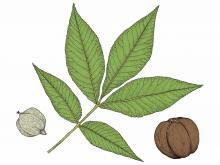
Species Types
Scientific Name
Carya ovata
Description
Many Missouri trees are quite useful, and shagbark hickory is a great example. Its wood makes excellent, slow-burning charcoal, its nuts are edible, and its wood is used for many implements. Wildlife from moths to squirrels to bats appreciate shagbarks, too!
Media

Species Types
Scientific Name
Juglans cinerea
Description
Butternut, or white walnut, is closely related to the more common black walnut. Both have delicious edible nuts, and both are valued for their wood. Butternut, however, is declining due to a usually fatal fungal disease.
Media
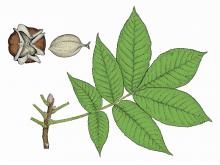
Species Types
Scientific Name
Carya tomentosa
Description
Missouri is rich with hickory trees. Mockernut hickory stands out from the rest for its hard wood, thick-shelled fruit enclosing relatively small kernels, large and light-colored terminal buds, and tight, never shaggy, bark.
Media
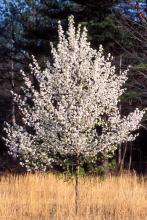
Species Types
Scientific Name
Pyrus calleryana
Description
'Bradford', a type of Callery pear, has been hugely popular in landscaping, but it can escape and hybridize with relatives. Alarmingly, it has become an invasive plant. Learn more about this problem tree.
Media
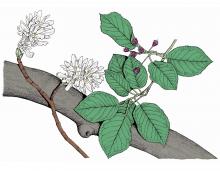
Species Types
Scientific Name
Amelanchier arborea
Description
Downy serviceberry is a tall shrub or small tree found throughout Missouri in open or rocky woods. It is one of the earliest spring trees to bloom, producing showy white flowers. The springtime flowers, the purplish, often sweet berries, and the brilliant fall color make serviceberry an attractive landscaping tree.
Media

Species Types
Scientific Name
Carpinus caroliniana
Description
American hornbeam is also called musclewood because of the sinewy appearance of its smooth gray bark. The name hornbeam refers to the genuine strength of its wood — it is one of the hardest and strongest woods in North America.
Media

Species Types
Scientific Name
Diospyros virginiana
Description
Persimmon is best known in the fall, when its orange, plumlike fruits come on. Be careful, however, to make sure a persimmon is ripe before you pop it into your mouth, or you could have a puckery surprise!
Media
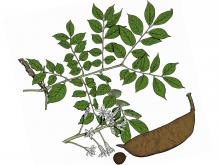
Species Types
Scientific Name
Gymnocladus dioicus
Description
There’s no mistaking Kentucky coffee tree when its large, tough seedpods are hanging from its limbs or dropping to the ground below. Unpopular as food with today’s wildlife, these seedpods might have fed mastodons and other large, extinct North American mammals.
Media

Species Types
Scientific Name
Carya spp.
Description
Hickories are an important part of Missouri’s oak-hickory woodlands and forests. They have tremendous economic value, too. Learn about the nine species of hickory found in Missouri.
Media

Species Types
Scientific Name
Quercus spp.
Description
Oaks are the most important group of trees in Missouri, in both human and ecosystem value. They dominate most of the forests, woodlands, and savannas in the state. Learn more about our 22 species.
See Also
About Trees, Shrubs and Woody Vines in Missouri
There are no sharp dividing lines between trees, shrubs, and woody vines, or even between woody and nonwoody plants. “Wood” is a type of tissue made of cellulose and lignin that many plants develop as they mature — whether they are “woody” or not. Trees are woody plants over 13 feet tall with a single trunk. Shrubs are less than 13 feet tall, with multiple stems. Vines require support or else sprawl over the ground.





















